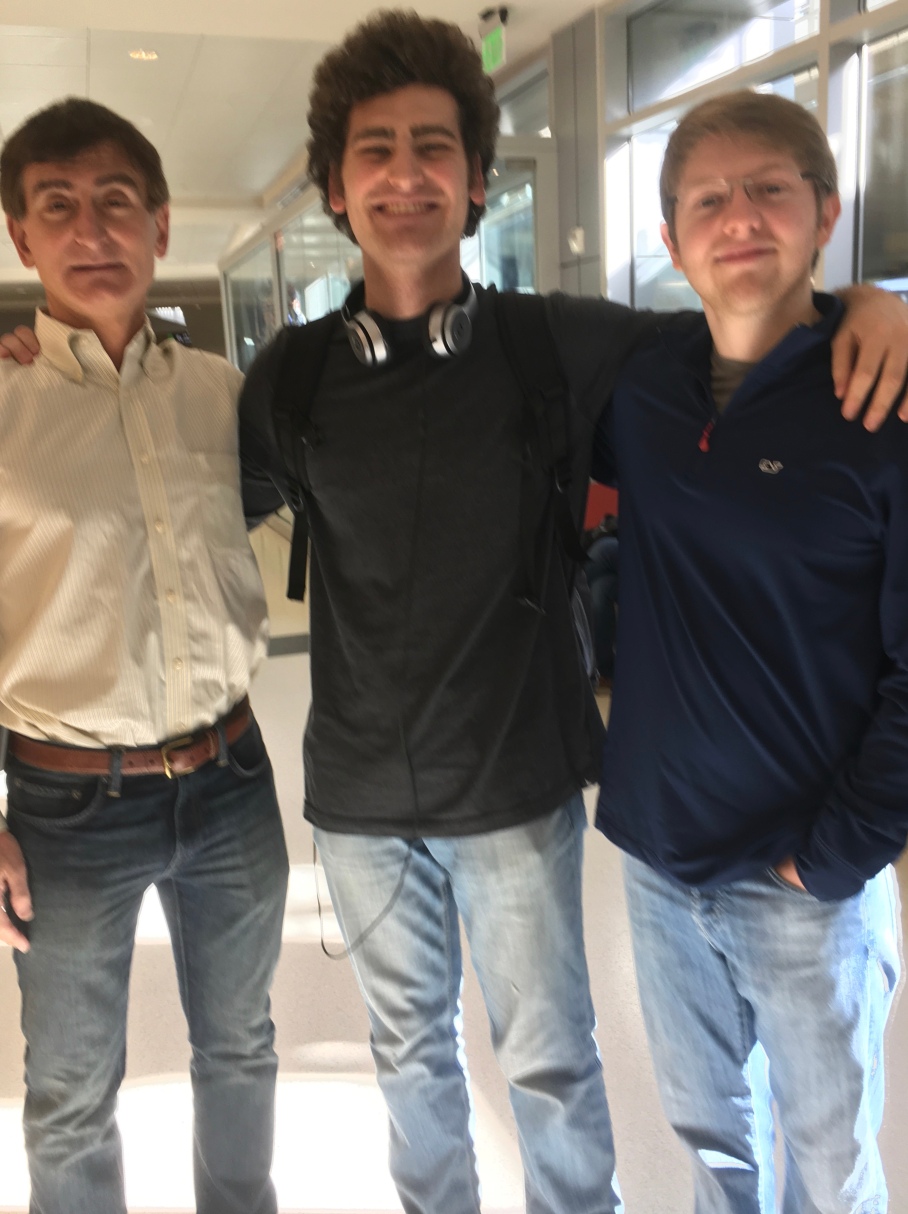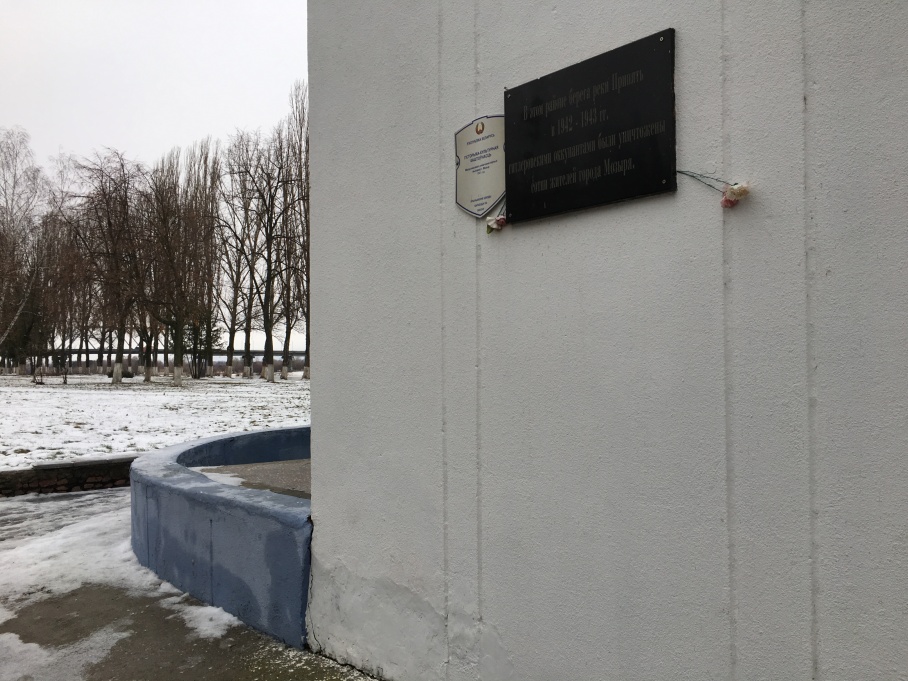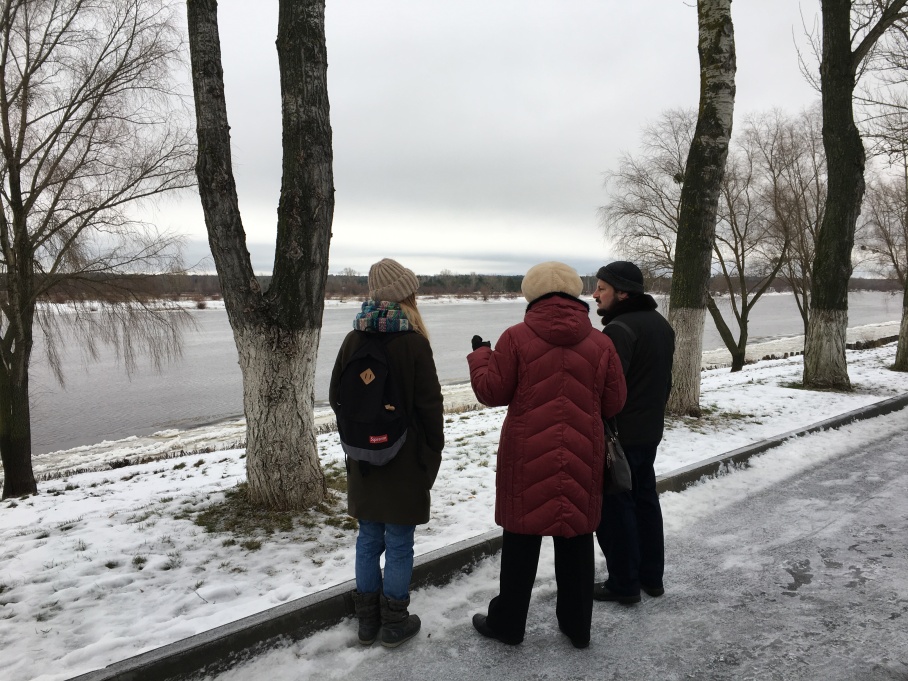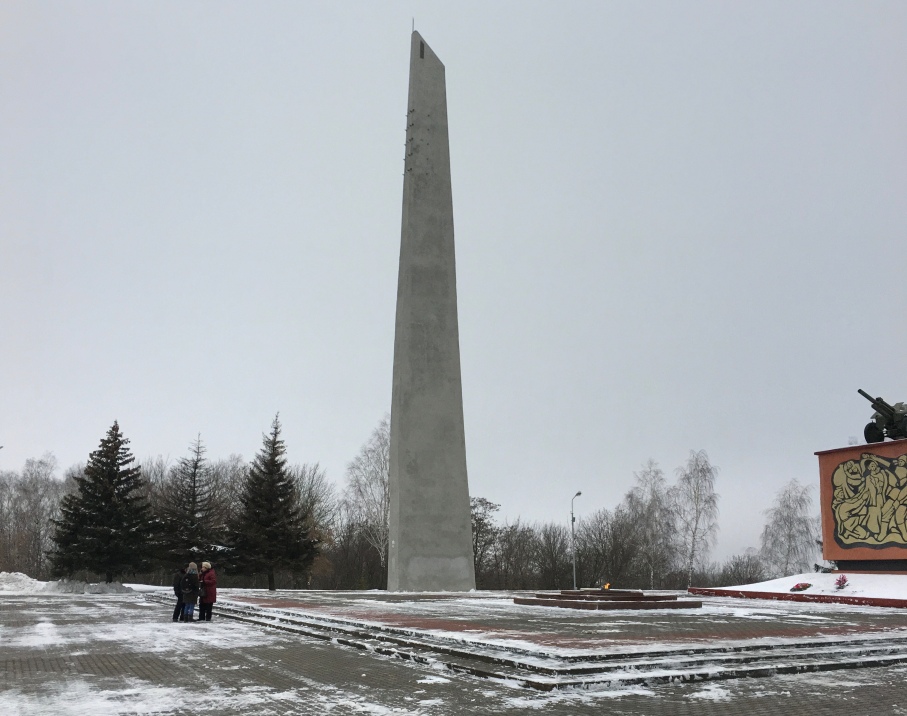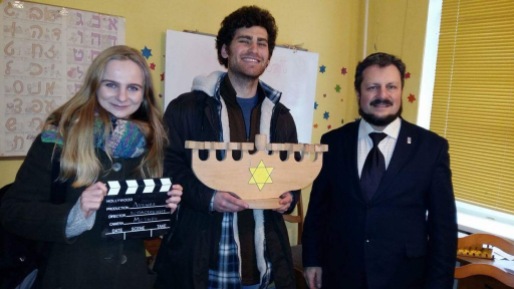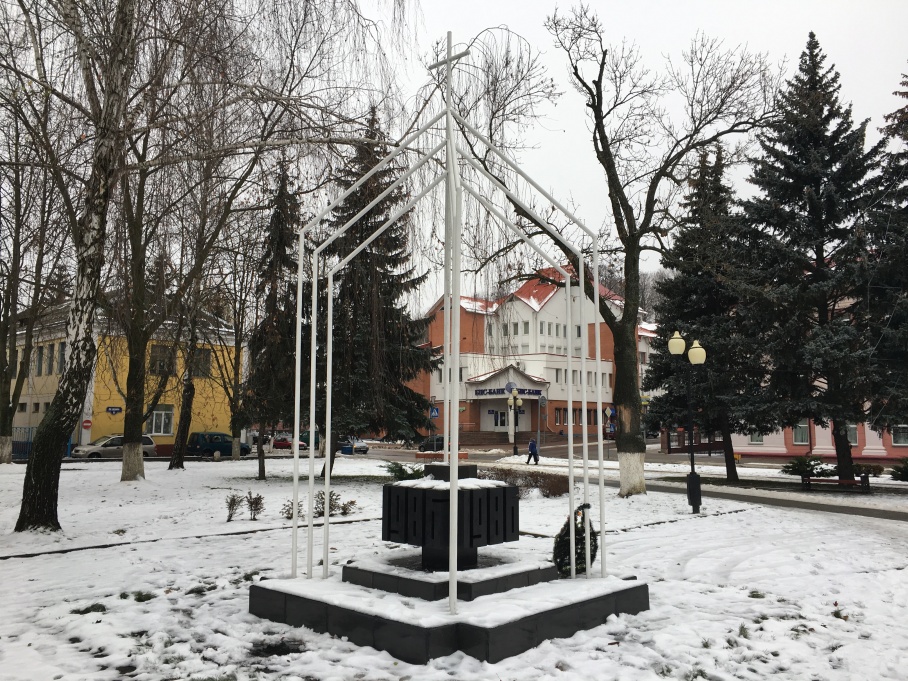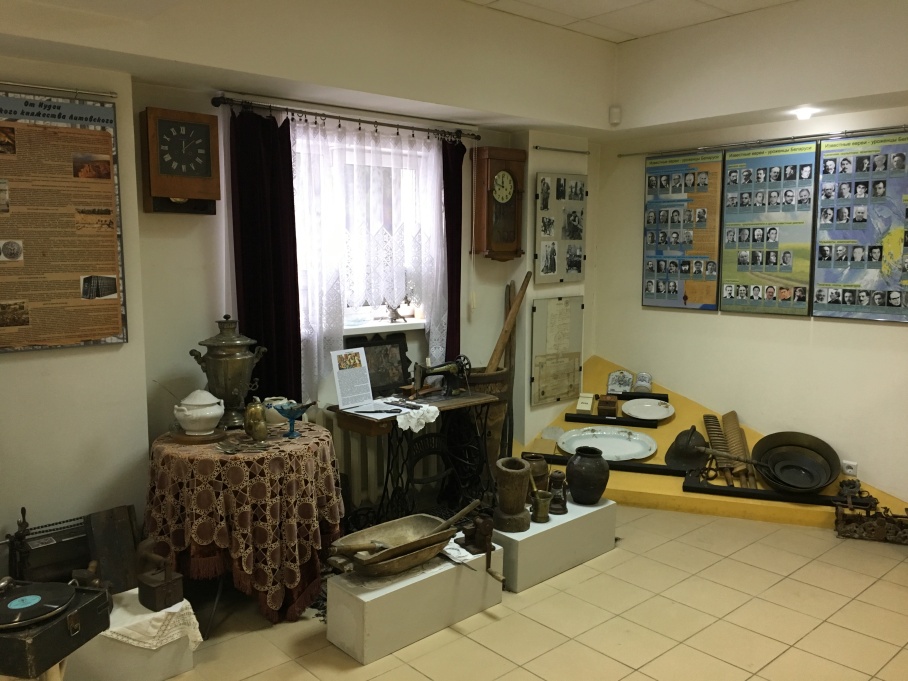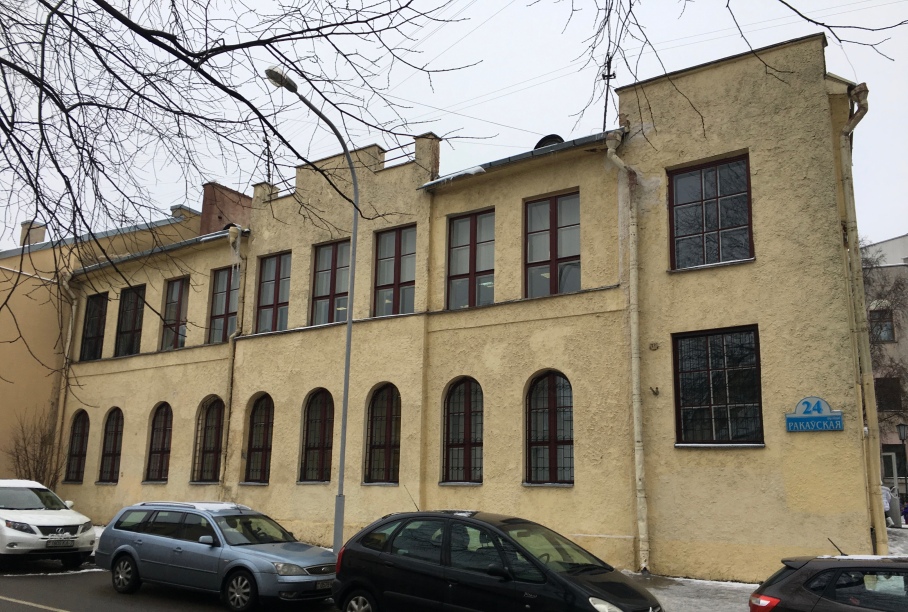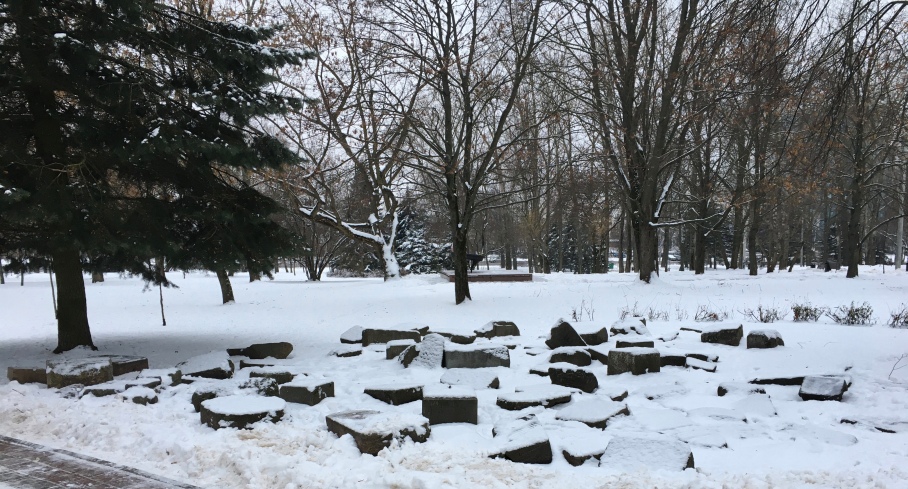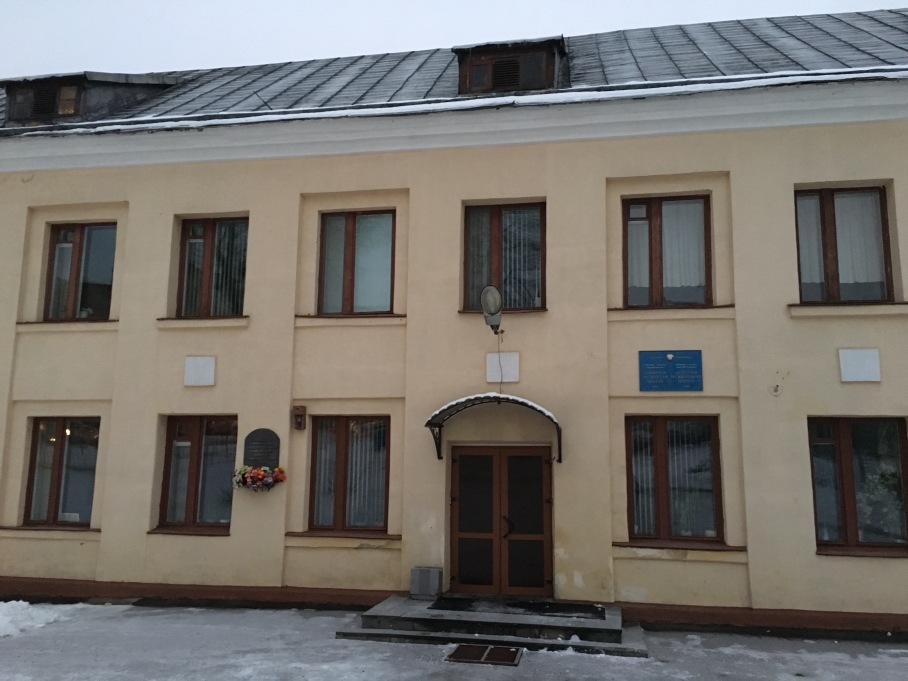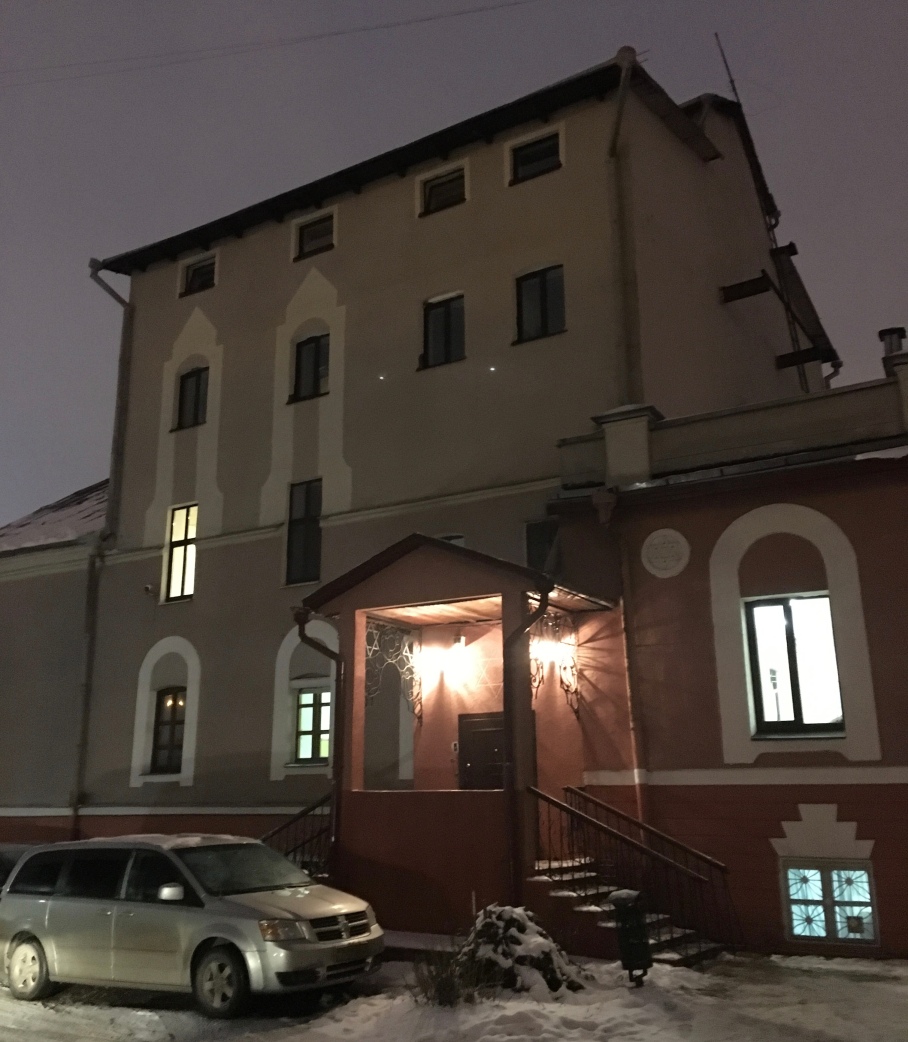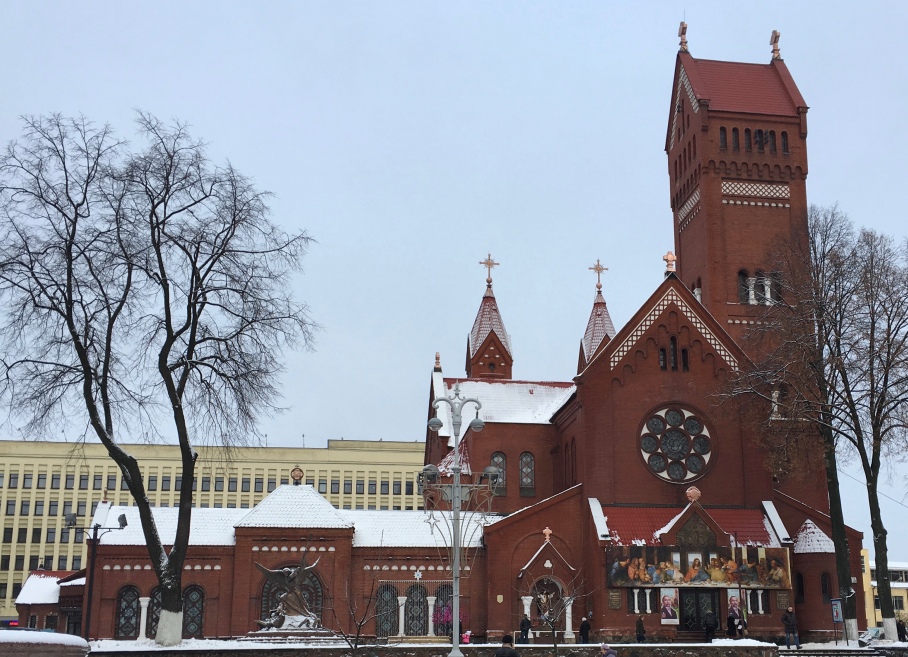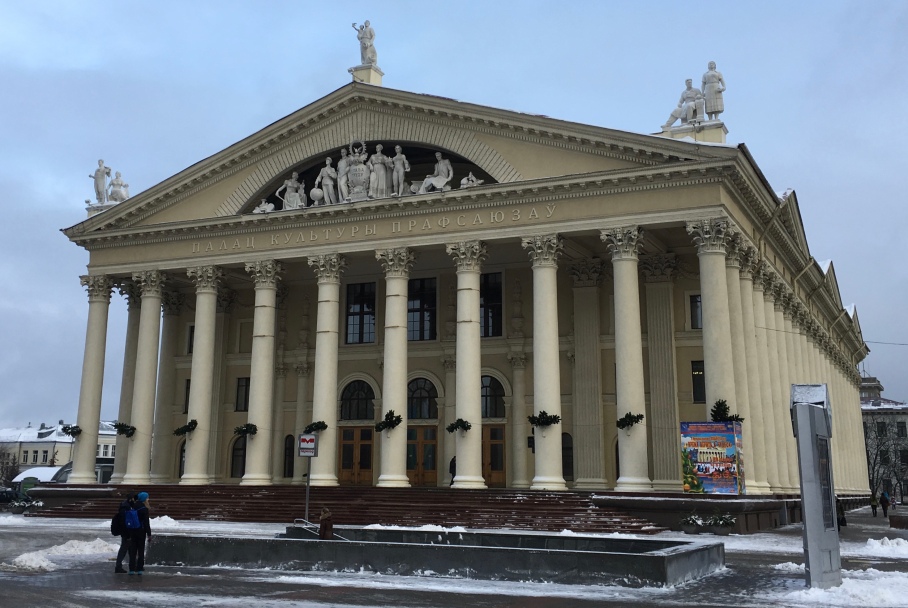Rabbi Grisha, our adored driver Pavel (I can call him Pasha), and I left the hotel for breakfast at 9:15. We settled on a buffet in the center of Brest where we ate latkes- a year round delicacy in Belarus.
We met Regina Simonienko at the Nefesh House just after 10:00. While humble in size, the center is filled with memorabilia from the long history of Jews in Brest. It is funded primarily by the JDC, Dutch Humanitarian Fund and private donors.

Regina is chair of both the secular-Jewish community and of the Holocaust Memorial Fund in Brest, which lies in the southwestern corner of Belarus. I sat with Regina as she provided an extensive overview of Jewish Brest while Rabbi Grisha translated. As representative of Lithuania in the Council of Four Lands, Brest was the center of Litvak Jewry until the Vilna Gaon brought acclaim to Vilnius in the 18th century.

Before the war, Jews accounted for over half of Brest’s 26,000 residents. After an extensive tour of her impressive collection, we left for an excursion through the city.

We started at the statue of Menachem Begin (1913-1992), sixth Prime Minister of Israel and native of Brest. Begin won the Nobel Peace Prize in 1979 for negotiating a peace treaty with Egyptian President Anwar Sadat, but also promoted the construction of settlements and the invasion of Lebanon in 1982.

Just behind the statue stands the only synagogue that withstood Nazi terror. It has since been repurposed as a cinema. There were over forty synagogues in Brest before the war.

Regina told me that the mayor once offered to erect a plaque indicating that the cinema was once a synagogue, she replied to him that she would prefer the reverse.

We had a pleasant walk down the pedestrianized thoroughfare, which far exceeded my expectations.

We visited the pharmacy of Solomon Greenberg, one Brest’s most affluent residents in the interwar period. Greenberg paid his family’s way to safety during the Holocaust, his son Jack recently visited.

The building still serves her original purpose with a small museum that relays her origins.
We ended our tour at the ghetto memorial. Only 19 Jews survived the two day massacre of mid-October, 1941. Reunited with those who returned from military service and from refuge in Siberia, the Jewish community numbered only forty after the war. It had grown to 1000 due to regional convergence in Brest by the fall of the Soviet Union, but Jews remained afraid to affiliate. The Jewish population of Brest is estimated at 800 of 350,000, but far less participate in communal life.

We bid farewell to Regina at half past noon and started our drive to Kobryn. We arrived at 1:15. An entry marker indicates that the town dates to 1287 when it was a principality in the Kingdom of Galicia-Volhynia, a successor state of the Kievan Rus. The town was conquered by Grand Duke Gediminas only a few decades later and remained under Lithuanian rule until the Partitions.

We made straight for the synagogue, the second largest in all of Belarus according to Rabbi Grisha. It was constructed in the 18th century for a community of ~1000.

Hasids venerated the Kobrin Dynasty, related to and later incorporated into the Slonim Dynasty. The traditional (Litvak) community was led by the famed Rabbi Chaim Berlin in the late-19th century.

A local told us that he worked there in the eighties, when it functioned as a brewery. It has since fallen into disrepair and is apparently the venue of choice for drug deals.

Efforts in the last decade to renovate the synagogue never came to fruition.

We were disappointed to find a swastika gratified next to 1488, a common symbol in fascist circles. 14 is a reference to the 14 word white-supremacist slogan ‘we must secure the existence of our people and a future for white children’. 88 refers to the eighth letter of the alphabet- HH (Heil Hitler).
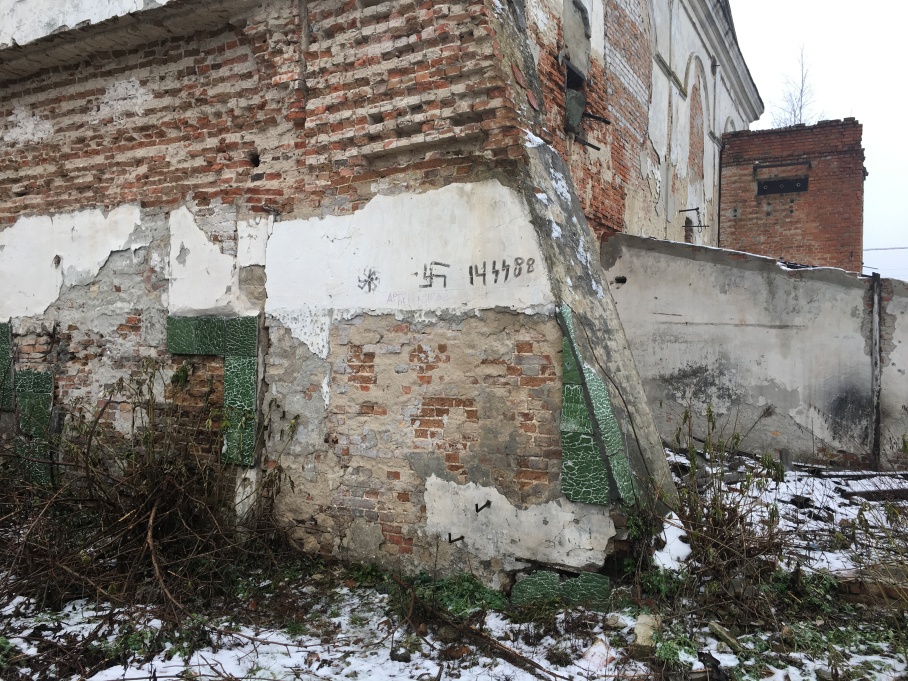
The synagogue stands across from a department of the military.

We made quickly for the Jewish cemetery so as to utilize daylight. I was surprised to find an impressive entrance and plaque, the entire plot surrounded by a gate. It was locked, but I’d waited ten years too long…

Three empty ohels stand at the center, each represent a Rebbe of the Kobrin Dynasty interred there.

Just in front stand a collection of graves of the Soltoveitchik family, a Litvak dynasty that descends from Joseph Dov Soltoveitchik (1820-1892), great-grandson of Chaim Voloshin.

The close proximity of Litvak and Hasidic graves is emblematic of the religious divide among Kobryn Jews.

A marker atop a central mound names members of the Kobrin Dynasty interred there.

Surviving graves surround a swampy pit bisected by an artificial walkway.

Surely the entire plot was once filled with stones.

I’ve read that the oldest stone dates to the 15th century, but privileges were only offered to the Jewish community in 1514. An influx of refugees from Chmelnitsky-ravaged Ukraine made for a sizable addition in the mid-17th century.

Counted among the 1000+ Jews in the 1784 tax list are Chaim Weinstein son of Todris (1731-1801), wife Tamara and sons David (1769-1810) and Todris (b.1772). I received this information from a researcher commissioned by Ron Winston, whose father Harry (1896-1978) changed his name from Weinstein and later donated the Hope Diamond to the Smithsonian.

Todris’ son, Hirsch (b.1790), was the patriarch of a branch that settled predominantly in Birmingham, Alabama. His grandson Harry Weinstein (1847-1913) was my earliest ancestor to leave Europe for America. In 1885 he settled in Brookside, Alabama where six years later he married a Kobryn native thirty years younger, Sarah Leader (1876-1927). They raised four sons and one daughter- my Papa’s mother, Dora.

Many years of independent research revealed that a sizable portion of the Birmingham Jewish community can trace their roots to Kobryn. Abe Tenenbaum left Birmingham for Kobryn in 1920 to distribute funds collected from community members for their relatives left behind. A supporting document for Tenenbaum’s passport application holds signatures of the benefactors, patriarchs of many families that still reside in Birmingham.
I recited Kaddish for my many ancestors buried there.

We then visited the central square.
An alleyway leads to a monument that celebrates Kobryn’s 700 year anniversary. It stands in front the municipal office of the registrar.

The Orthodox Cathedral of Saint Alexander Nevsky stands a few steps away. It was built in 1868.

The central square is otherwise surrounded by pre-war buildings including a particularly attractive pharmacy like we visited in Brest.

Another building marks the entrance to the ghetto, which stretched along Pinskaya Street (now Piersomaskaya Street) to the synagogue.

Along Pinskaya stood the 20+ homes owned by the Jewish community in 1563. Kobryn’s 8000 Jews were forced into the ghetto in autumn of 1941.

On June 2, 1942, ~3000 Jews were transported to their death at Bronna Gora. On October 15, 1942 residents from a nearby village were ordered to prepare 4 deep pits in southern Kobryn. ~4500 Jews were marched there from the ghetto, Nazis ordered the villagers to shoot them. Afterwards, Nazis killed the villagers.
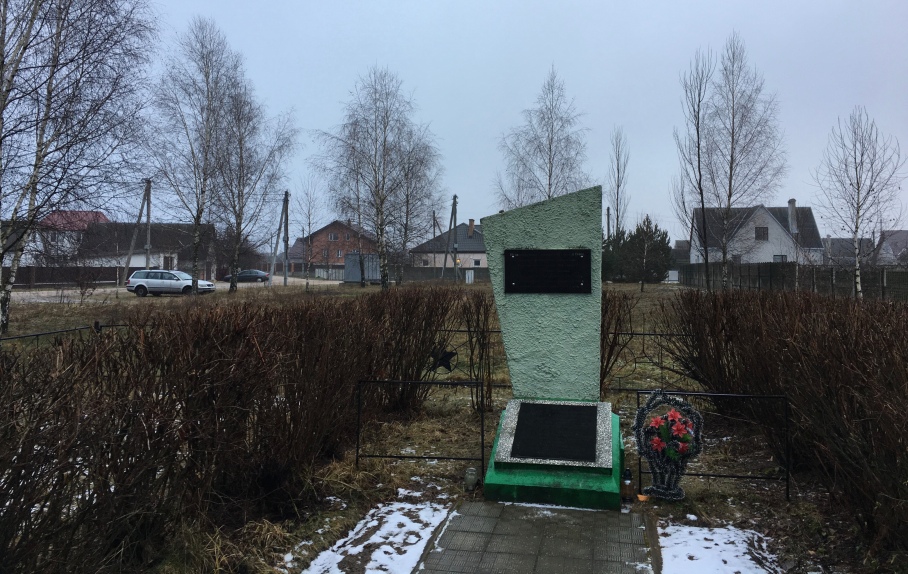
Counted among the massacred were many of my relatives, including Isaac Leader (b.1862). We recited Kaddish at their mass grave.

At a quarter of 4:00 we started our drive south. We arrived in Divin at 4:10.

I was impressed by the blue wooden cathedral as we entered the tiny village, which lies no more than five kilometers from the border with Ukraine.

I didn’t have high expectations of our time in Divin. Rabbi Grisha had never visited and there was no information about pertinent sites on the internet. I did find; however, that Jews numbered ~1000 in 1900 (a third of the village), and that they established a synagogue on Sovetskaya Street. I figured we would drive down Sovetskaya.

As we exited the car to photograph a traditional home, Rabbi Grisha approached an old man standing behind it. Alexander spoke with a difficult accent, one derived from living in the borderland. Grisha shared my story and inquired about any Jewish sites. To our amazement, Alexander informed us that a Jewish cemetery lies on the other side of town square. He suggested we seek further assistance in the square.

We thanked Alexander for his assistance and examined his traditional well.

In town square Rabbi Grisha solicited a middle-aged man who moments later was in the backseat of our car. His name was Michael. Michael directed us a very short distance along Sovetskaya to the cemetery. No stones remained, but a Russian memorial relayed the plot’s significance.

Sarah Leader’s mother, Eddie Engel, was born in Divin in 1855. Eddie’s father, Isaac Zavel Engel (b.1825), was the patriarch of a large family that settled primarily in Birmingham.

I was thrilled for the opportunity to recite Kaddish in memory of my Engel ancestors and relatives.

Michael joined us again in the car and directed us to the nearby mass grave. Just before WWII, the Jewish community had dwindled to near 300 in a village of 3,000. The memorial in Russian read that 1200 Jews were gathered from surrounding villages in the Divin Ghetto before their murder on this site in 1942. Two grandsons of Isaac Zavel Engel and their many descendants were killed there.

Considering my expectations of Divin, I was beyond surprised by the success of our trip. I thanked Michael endlessly for his support.

We left Divin before 5:00 and started our long drive to Mozyr. I blogged as Grisha napped. At 8:00 we stopped for dinner in Pinsk. By 9:15 we were back on the road.

We arrived in Mozyr just before midnight.
